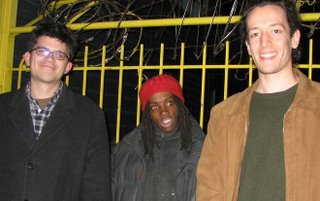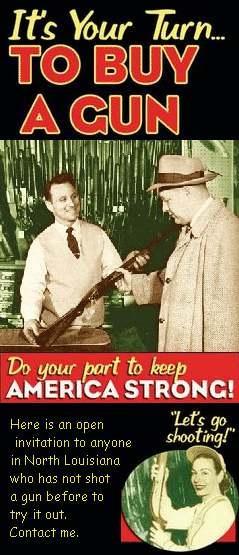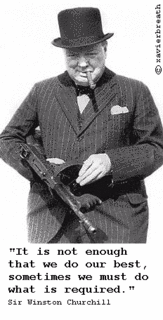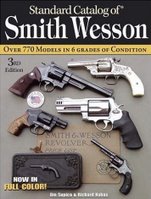From the Archives ~ Standing on the X
Sometimes, because of events I have experienced in my life, I have a fatalistic point of view. When your number is up, when you are standing on that X,......Well, everyone has to die sometime.
But then, as a nurse, I know not everyone dies immediately. Some victims of crime are crippled. Some are paralyzed.
 Some jockey wheelchairs and wear colostomy bags. They develop decubitus ulcers that demand constant care, lest they become infected, creating sepsis and killing the victim, concluding a tragic chain of events years after a victim's bad decision and a criminal's actions set them in motion. Other victims survive on life support, brain dead, unknowingly generating years of agony and turmoil over every medical and nursing decision their loved ones are forced to face. I do not want to do that to my wife and children.
Some jockey wheelchairs and wear colostomy bags. They develop decubitus ulcers that demand constant care, lest they become infected, creating sepsis and killing the victim, concluding a tragic chain of events years after a victim's bad decision and a criminal's actions set them in motion. Other victims survive on life support, brain dead, unknowingly generating years of agony and turmoil over every medical and nursing decision their loved ones are forced to face. I do not want to do that to my wife and children.When I worked Home Health, providing specialized wound care in some of the most crime infested areas of a poverty stricken state, I carried redundant guns. One was on my hip under my lab coat, or in a SmartCarry holster if I was wearing scrubs. One was my nursing bag, secured in a middle compartment, velcroed shut. That bag was actually a soft sided briefcase designed to carry a gun.
 I recommend a similar bag to every nurse or physician I teach. In my pocket I carried a revolver, because I expected the struggle to be in confined spaces, quickly going to the ground, with the firearm jammed in the criminal's ribs. In the back of my Jeep Cherokee, I carried an aluminum baseball bat, my non-lethal weapon.
I recommend a similar bag to every nurse or physician I teach. In my pocket I carried a revolver, because I expected the struggle to be in confined spaces, quickly going to the ground, with the firearm jammed in the criminal's ribs. In the back of my Jeep Cherokee, I carried an aluminum baseball bat, my non-lethal weapon.Twice over a period of eleven years of this type of work, I felt compelled to draw a weapon. Once, I pulled the bat. Each time, the event could have been avoided by better planning on my part. The learning curve was steep, but I was learning.
There are reasons why a grammar school dropout who cannot multiply 26 by 4 is able to outwit and victimize a person who is of demonstrably higher intelligence and social proficiency.
First, the criminal does this for a living. They are not as dumb as many think they are. If you fail to respect their level of skill, you will be unprepared to deal with them. They are not dumb. They just attended a different "school" and studied a different "curriculum". To understand and predict their behavior, you must know a bit of that curriculum as well.
 Understanding the behaviors and motivations of different types of criminals is the framework with which a wise person protects themselves. Know your enemy. Then practice avoidance if you can. If avoidance is impossible, try evasion. Try both of these tactics prior to defense. You do not have to "win" a dangerous encounter. Nobody wins a gunfight. They simply survive.
Understanding the behaviors and motivations of different types of criminals is the framework with which a wise person protects themselves. Know your enemy. Then practice avoidance if you can. If avoidance is impossible, try evasion. Try both of these tactics prior to defense. You do not have to "win" a dangerous encounter. Nobody wins a gunfight. They simply survive.The next reason that a criminal can overcome a victim is they have a plan. They are acting offensively, while the victim is reacting defensively. By having a plan in place before contact is made, the criminal has a distinct advantage. They have considered contingencies. They know what they are going to do. They often work in numbers, confusing and surrounding the victim beforehand. They know what's coming. The victim does not. Know how the criminal works. He has a plan, and is looking for a victim to impose the plan on. The criminal has considered, and quite possibly experienced the reactions he will receive from his victim before the fact. Having a plan of action to deal with criminal activities is vital once you have been targeted. There is no one plan to fit every contingency. Having a counter plan is good, but removing yourself from the victim selection process is a far superior tactic.
The active criminal conceals their intent until they have selected a victim, moved in for the attack, and possibly made a couple of probes to assess the victim's responses. Recognizing the criminal's actual intent is vital.
 That gives you the edge to counter his plan with a plan of your own. The most frequent mistake that a victim makes is the failure to recognize the threat until it is to late. The criminal works with behavioral devices to conceal his actual purpose. The potential victim must see through the veil and recognize the actual intent if they are to counter the criminal. The criminal may be a scruffy crackhead, or they may be an attractive member of the opposite sex. They may be working alone, or in groups, either seen or unseen. They may even be an angry family member.
That gives you the edge to counter his plan with a plan of your own. The most frequent mistake that a victim makes is the failure to recognize the threat until it is to late. The criminal works with behavioral devices to conceal his actual purpose. The potential victim must see through the veil and recognize the actual intent if they are to counter the criminal. The criminal may be a scruffy crackhead, or they may be an attractive member of the opposite sex. They may be working alone, or in groups, either seen or unseen. They may even be an angry family member.Once the criminal's plan is set in motion, the victim must seize the initiative. They must place the criminal on the defense. They must force him into the role of the person who is reacting to the unexpected. Your gun may be unexpected, or it may not be. It is your choices, your behavior that must redirect the conflict, not your firearm.
Analyzing when you are most vulnerable is key. Military men know that insertion is not the time of vulnerability. Extraction is. Crimes that occur when a person is entering a building are often crimes of opportunity, the work of amateurs. The criminal is easily disengaged. This is also a time when a more experienced criminal will size you up. They will sometimes make the first contact on your entrance, knowing that an exit is soon to follow. Crimes that occur when a person exits a building are much more likely to be targeted towards the specific individual, and be premeditated. The criminal knows your presence when you are leaving. While you were otherwise engaged, he was formulating his plan, and perhaps gathering allies. He possibly even knows the path you will take, as it is usually the most direct one to your vehicle. These are much more difficult to avoid and disengage from.
I knew that I was most vulnerable when I left an apartment or house in the crime and gang infested areas where I worked.
 Before I opened the door of an apartment to leave, I would take a look outside the window. The patients understood why, hell they lived there. I always, on the first patient contact, explained that I did not carry drugs, syringes (a lie), money, or valuables. I wore an ugly old Timex. I carried a beat up camera for wound documentation......I actually took sandpaper to it to make it less desirable. I drove a humble Grand Cherokee with a dented fender and ugly rims. I made certain the young men in the home, often involved in illegal if not outright gang activity, knew my purpose. I was there to provide nursing service, not to act as a police informant. I made sure they knew I would pull out and not only let them rot, but impede further care by other agencies if I was threatened. I did not equivocate on these issues. Often, these young men would serve as my protection against the threats as I came and went about my business. I would talk and listen as I worked, gathering information not just on specifics, but on the emotional climate of the area. I made mental notes of who came and went in the homes, the layout of the homes, as well as blankets hung in doorways and doors padlocked shut. One of the odd beliefs in these areas is that law enforcement needed a separate search warrant for padlocked doors inside a home. Thus, a padlocked door indicated illegal activity within the home. All good information to know. Even though young men or women, often seen as criminals, might serve as my protectors in these neighborhoods, I kept my distance and would not allow them to walk me to my vehicle. They knew why.
Before I opened the door of an apartment to leave, I would take a look outside the window. The patients understood why, hell they lived there. I always, on the first patient contact, explained that I did not carry drugs, syringes (a lie), money, or valuables. I wore an ugly old Timex. I carried a beat up camera for wound documentation......I actually took sandpaper to it to make it less desirable. I drove a humble Grand Cherokee with a dented fender and ugly rims. I made certain the young men in the home, often involved in illegal if not outright gang activity, knew my purpose. I was there to provide nursing service, not to act as a police informant. I made sure they knew I would pull out and not only let them rot, but impede further care by other agencies if I was threatened. I did not equivocate on these issues. Often, these young men would serve as my protection against the threats as I came and went about my business. I would talk and listen as I worked, gathering information not just on specifics, but on the emotional climate of the area. I made mental notes of who came and went in the homes, the layout of the homes, as well as blankets hung in doorways and doors padlocked shut. One of the odd beliefs in these areas is that law enforcement needed a separate search warrant for padlocked doors inside a home. Thus, a padlocked door indicated illegal activity within the home. All good information to know. Even though young men or women, often seen as criminals, might serve as my protectors in these neighborhoods, I kept my distance and would not allow them to walk me to my vehicle. They knew why.I would park where I had alternate routes to my vehicle. I would keep open space around me and structures and objects as much as possible.
 I made myself a difficult target. Still, I had to approach my Jeep. The criminals knew where to lie in wait. Thus, I was careful to park where I would have some room to see my attacker as he approached my vehicle, and where I could observe the vehicle from inside the home. Time and distance were my protection. I had a square convex mirror stuck on the rear glass of the Cherokee's hatch so I could see an approach from behind as I opened it. I had remote controlled door locks, and I disabled the passenger side and rear outside door handles. I kept the batteries changed in the door remote, giving me max power in opening them, and I kept the Cherokee maintained with a full gas tank.
I made myself a difficult target. Still, I had to approach my Jeep. The criminals knew where to lie in wait. Thus, I was careful to park where I would have some room to see my attacker as he approached my vehicle, and where I could observe the vehicle from inside the home. Time and distance were my protection. I had a square convex mirror stuck on the rear glass of the Cherokee's hatch so I could see an approach from behind as I opened it. I had remote controlled door locks, and I disabled the passenger side and rear outside door handles. I kept the batteries changed in the door remote, giving me max power in opening them, and I kept the Cherokee maintained with a full gas tank.Today, my situation is different, but I still take the time to realistically recognize my vulnerabilities, and to raise my level of awareness when I am most vulnerable. It is the heightened awareness that prevents a person from being victimized, not the gun concealed on their person.
Drawing and using a gun is only a part of one plan. It is a possible counter action, but not the only one. Keeping your back to the wall in a restaurant is only one technique. We plan for crimes that we hear about, the ones that make the 6:00 news. Most crimes do not occur as the spectacular robbery with multiple patrons in a restaurant or bar. They occur when the victim is alone and vulnerable, in a laundromat, walking a dog, or approaching their automobile or front door. These opportunities for criminals to ply their trade must be countered as well. Gunfighting is not about guns, it's about fighting. You must be willing and able to fight, and fighting is about survival. The gun is only a means of increasing your advantage in a struggle for life and survival. The best way to survive is to recognize and avoid or offset the threat altogether. Survive at all costs.
Related: When Being a Good Guy Isn't Enough
A Tactical Analysis of the Tyler Courthouse Shooting and the Tacoma Mall Shooting
By Syd
Labels: Mindset, Self Defense













































































